Both Judaism and Islam emphasise the transcendence of God – that the divine is beyond human understanding. Christianity asserts this too, but it is a fundamental characteristic of our faith that we proclaim what at first appear to be contradictory statements about the divine. Yes, God is transcendent, entirely beyond the capacity of our knowing and yet, at the same time is immanent, is seen and known in the person of Christ Jesus. We have arrived at this position through the efforts of the Church to understand the events of the life, death and resurrection of Yeshua, a carpenter from Palestine who walked this earth 2000 years ago. That name Yeshua is derived from ‘Ya’ – a shorting of the divine name and the Hebrew verb ‘yasha’ – to save. The name Jesus comes from the Greek translation of the Hebrew.
In the Jewish tradition with its emphasis on transcendence there is a distrust of images and labels. The name of God that was revealed to Moses was regarded as too sacred to be uttered. It was therefore routinely replaced in worship with the word ‘Adonai’ meaning Lord or ‘Elohim’ which is actually a plural term for gods, but which is understood to signify the God of Israel.
Now I have to admit that I feel some regret that we use the Greek translation of Christ’s name rather than the Hebrew. The translation would have been meaningful to the original Gentile converts I guess but from our perspective it feels an unnecessary distancing. I’ve always found the word ‘God’ to be unsatisfactory because it is purely a label, we capitalise the G to indicate that it functions as a name but we don’t signal that in speech and we hear the word god applied very broadly so that we might hear money described as a god or perhaps a sports person. It isn’t a sacred name in the Jewish tradition.
The word Trinity, like God, can be capitalised to indicate its use as a name but whilst we hear it as a loose description of a grouping of three, it’s at least predominantly used to describe the Father, Son and Holy Spirit. It is not the name itself that is significant though but rather the doctrine that it describes and in particular the revelation that simultaneously God is three and God is one.
The church arrived at the doctrine of the trinity in much the same way as it came to understand Christ as fully human and yet at the same time fully divine, namely through experience. A messiah was foretold in the Hebrew scriptures. As the disciples tried to make sense of their Rabbi and the miracles that he performed they looked to those scriptures, but their expectations were rather skewed as they imagine something rather more akin to a miliary victory over their Roman occupiers rather than a victory over sin and death. Whilst the cross of Christ was the pivotal moment in history as we understand it as Christians, the coming of the Holy Spirit at Pentecost was the pivotal moment in the church’s history, the point at which a rag bag bunch of followers become the energetic apostles who spread the Gospel to the ends of the earth. John’s Gospel tells us that Jesus taught his disciples that “the Comforter, which is the Holy Ghost, whom the Father will send in my name, shall teach you all things, and bring all things to your remembrance”.
As in others areas of Christian theology, when we talk about the Trinity we hold before ourselves that which is simultaneously both beyond our understanding and yet at the same time known intimately. At one level the Trinity is a straightforward description of God the creator, redeemer and sustainer; Father, Son and Holy Spirit. From the very earliest days of the church there has been a recognition of the absolute connection between God the creator, God the redeemer, revealed to us in Christ, and God the sustainer – the advocate, the spirit, who was poured out on the disciples at Pentecost. Whilst simple, it is at the same time a mystery, beyond our understanding.
As Michael Perham, former Bishop of Gloucester, put it, the Trinity is not a mystery you need to solve or to try to explain. It is instead a mystery you are invited to enter and to enjoy. There is a dynamic at the heart of the Trinity, the dynamic of self-giving love. The theologian W. H. Vanstone wrote “in the dynamic relationship within the being of the Trinity, love is already present, already active, already completed and already triumphant: for the love of the Father meets with the perfect response of the Son. Each, one might say, endlessly enriches the other: and this rich and dynamic interrelationship is the being and life of the spirit”. This love is never depleted or exhausted and sometimes this is most apparent to us when our need is greatest.
The Trinity is a mystery into which we can enter. When we enter it we are in enfolded by love. The love from the Trinity overflows over the earth. It is God’s deep desire that we shall indeed enter in and share the life of the Trinity. It is our mission to go with the flow of love and help it to reach the unexpecting places where people cry out for love.
So let us in the words of St Patrick’s breastplate, bind unto ourselves today the strong name of the Trinity and by invocation of the same, the Three in One and One in Three. By Whom all nature hath creation, eternal Father, Spirit, Word: praise to the Lord of our salvation, salvation is of Christ the Lord.
Amen.



